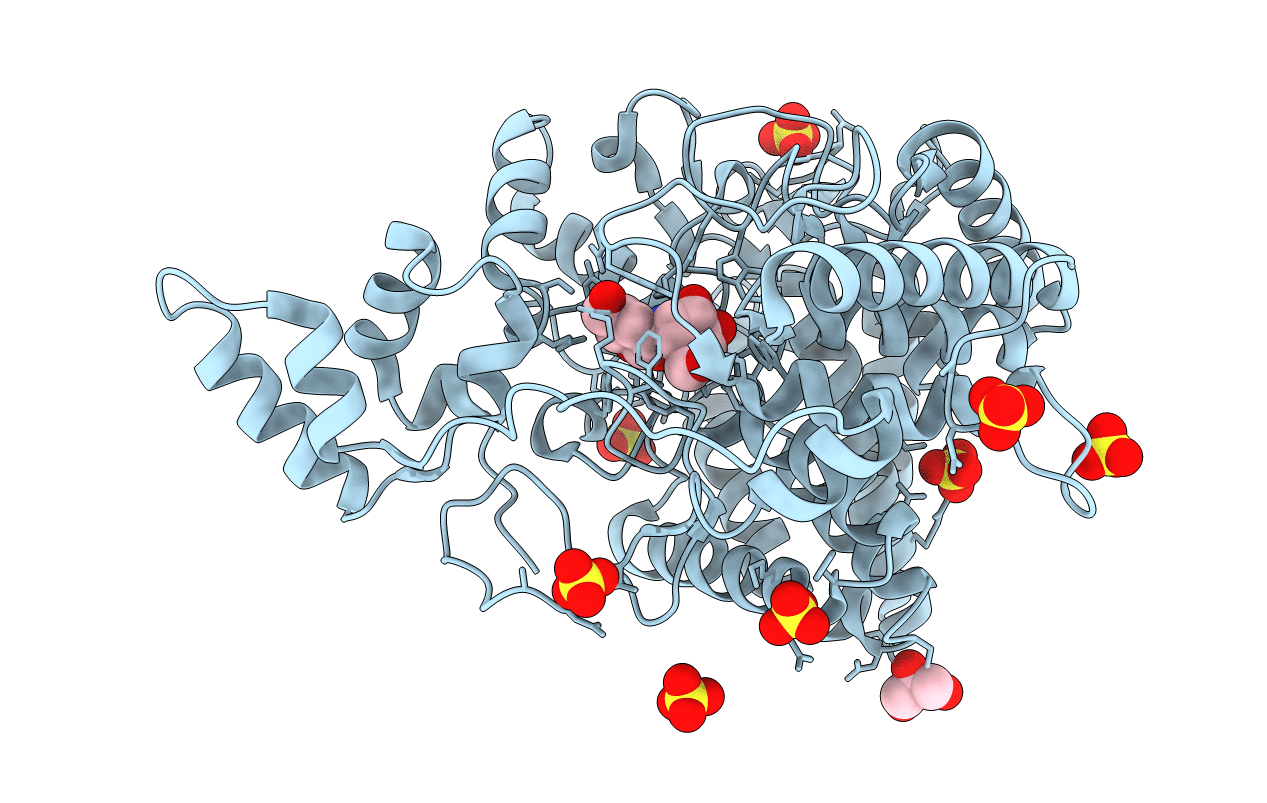
Deposition Date
2018-01-22
Release Date
2019-01-23
Last Version Date
2024-10-16
Entry Detail
PDB ID:
5Z66
Keywords:
Title:
Structure of periplasmic trehalase from Diamondback moth gut bacteria complexed with validoxylamine
Biological Source:
Source Organism:
Enterobacter cloacae (Taxon ID: 550)
Host Organism:
Method Details:
Experimental Method:
Resolution:
1.80 Å
R-Value Free:
0.19
R-Value Work:
0.16
R-Value Observed:
0.16
Space Group:
C 1 2 1


